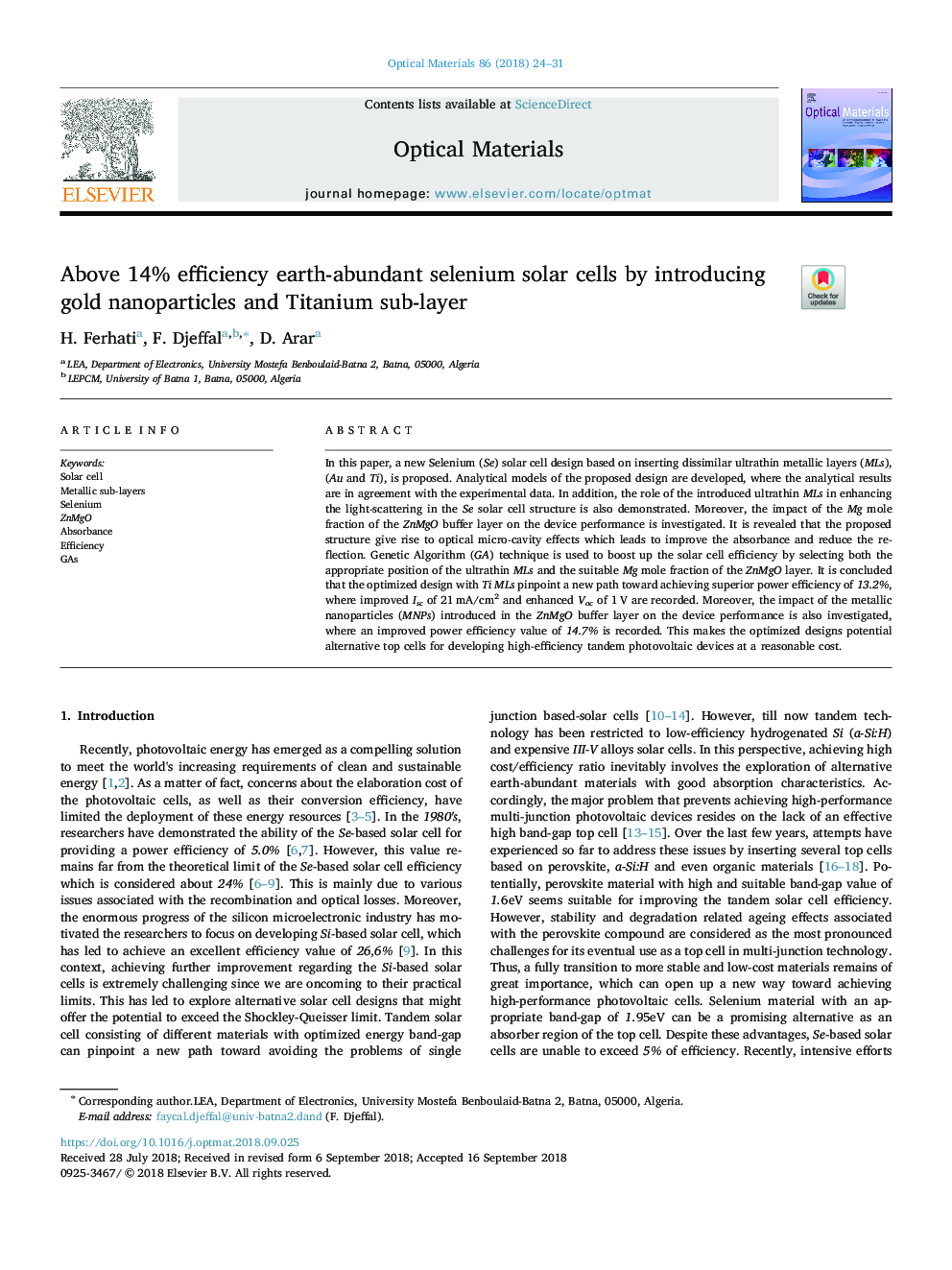| Article ID | Journal | Published Year | Pages | File Type |
|---|---|---|---|---|
| 11026727 | Optical Materials | 2018 | 8 Pages |
Abstract
In this paper, a new Selenium (Se) solar cell design based on inserting dissimilar ultrathin metallic layers (MLs), (Au and Ti), is proposed. Analytical models of the proposed design are developed, where the analytical results are in agreement with the experimental data. In addition, the role of the introduced ultrathin MLs in enhancing the light-scattering in the Se solar cell structure is also demonstrated. Moreover, the impact of the Mg mole fraction of the ZnMgO buffer layer on the device performance is investigated. It is revealed that the proposed structure give rise to optical micro-cavity effects which leads to improve the absorbance and reduce the reflection. Genetic Algorithm (GA) technique is used to boost up the solar cell efficiency by selecting both the appropriate position of the ultrathin MLs and the suitable Mg mole fraction of the ZnMgO layer. It is concluded that the optimized design with Ti MLs pinpoint a new path toward achieving superior power efficiency of 13.2%, where improved Isc of 21â¯mA/cm2 and enhanced Voc of 1â¯V are recorded. Moreover, the impact of the metallic nanoparticles (MNPs) introduced in the ZnMgO buffer layer on the device performance is also investigated, where an improved power efficiency value of 14.7% is recorded. This makes the optimized designs potential alternative top cells for developing high-efficiency tandem photovoltaic devices at a reasonable cost.
Related Topics
Physical Sciences and Engineering
Materials Science
Ceramics and Composites
Authors
H. Ferhati, F. Djeffal, D. Arar,
